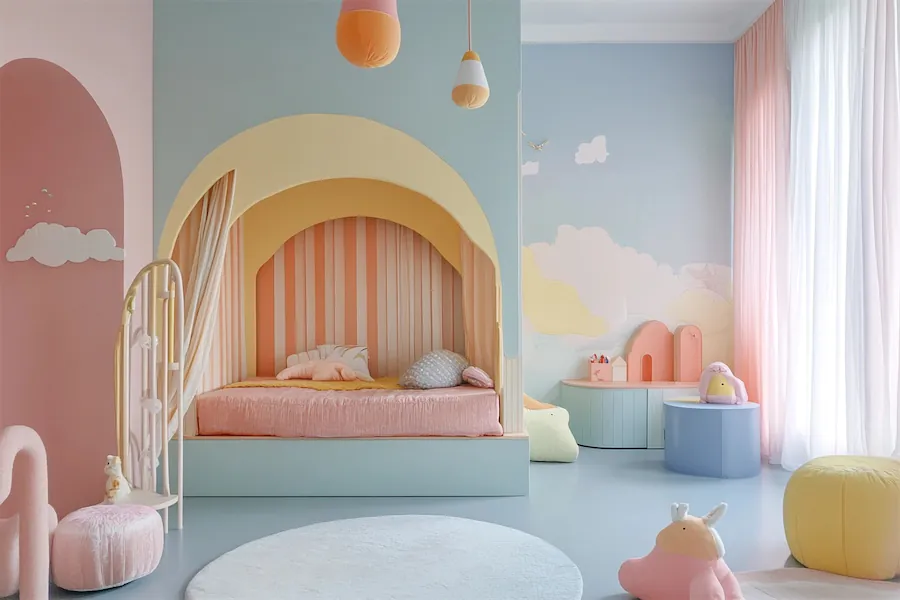Incorporating pastel colors into a child’s room creates a serene and inviting atmosphere, fostering creativity and relaxation. Soft hues like blush pink, mint green, baby blue, and lavender can transform a space into a whimsical haven that grows with your child.
History and Origins of Pastel Decor
Pastel colors have long been associated with tranquility and softness, making them popular choices in interior design. Historically, pastels gained prominence in the 18th century during the Rococo period, symbolizing elegance and lightness. In children’s spaces, pastels offer a timeless appeal that adapts well as the child matures.
Key Features of Pastel Kid Rooms
- Versatility: Pastel shades blend seamlessly with various themes and styles, allowing for easy updates and additions over time.
- Gender Neutrality: Colors like mint green, soft yellow, and lavender provide inclusive options suitable for any child.
- Calming Effect: Soft colors are known to create a peaceful environment, beneficial for rest and concentration.
Applications of Pastel Decor in Children’s Rooms
- Wall Treatments: Utilize pastel paints or wallpapers to set a gentle backdrop. For instance, a soft lavender accent wall can add depth without overwhelming the space.
- Furniture: Incorporate pastel-colored furniture pieces, such as a mint green dresser or a blush pink bed frame, to add subtle pops of color.
- Accessories: Enhance the room with pastel-hued rugs, curtains, and bedding to tie the theme together cohesively.
Considerations When Designing a Pastel Kid Room
- Balance: Pair pastels with neutral tones like white or beige to prevent the room from feeling too muted.
- Personalization: Involve your child in selecting their preferred pastel shades to create a space that reflects their personality.
- Longevity: Choose durable materials and timeless designs to ensure the room remains functional and appealing as your child grows.
Conclusion
Designing a pastel-themed kid’s room combines aesthetic appeal with a nurturing environment. By thoughtfully selecting colors and decor elements, you can create a versatile space that adapts to your child’s evolving tastes and needs.
